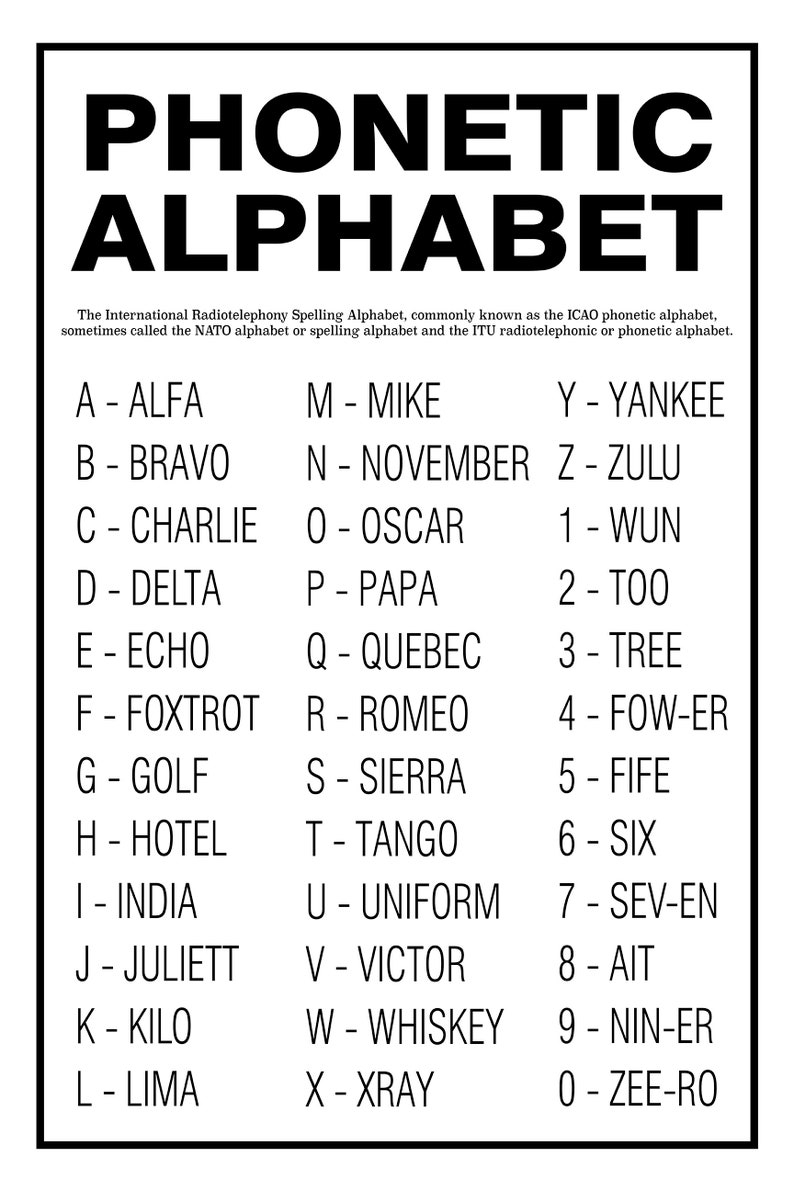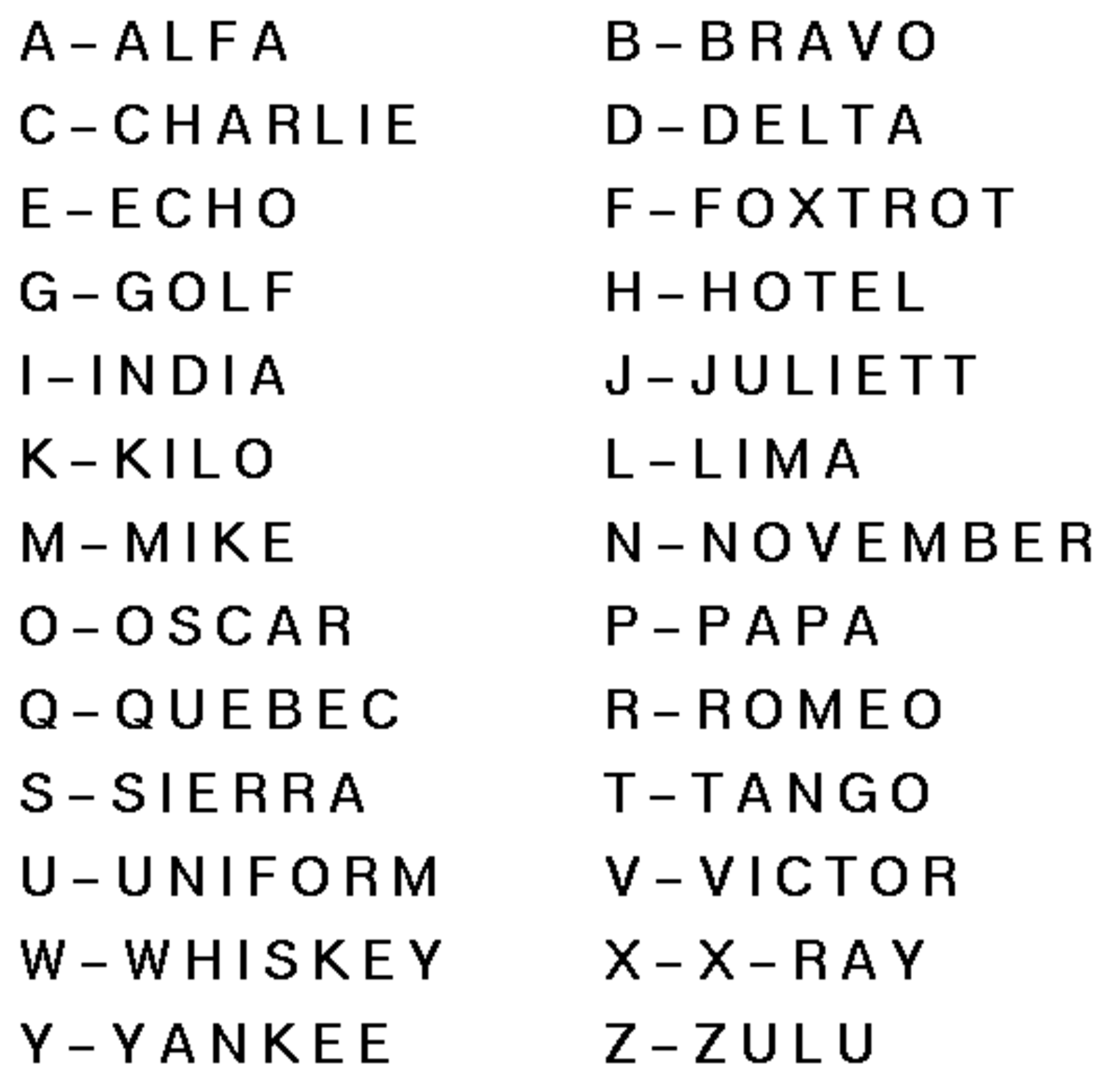
While many English-speaking countries and other European countries use the NATO phonetic alphabet, many use different versions – with the US and France being notable exceptions. But it can be even more beneficial in the contact centre environment.īefore we get into that, though, below is the phonetic alphabet, as first introduced by NATO in 1955. This can be very helpful in day-to-day life, as I’m sure we’ve all mistaken an “M” for an “N” or a “B” for a “P”. Less commonly known as the “military alphabet” or the “spelling alphabet”, the phonetic alphabet is often used to clear up any misunderstanding over the pronunciation of letters.

When spoken out loud, each word represents the letter that it begins with. The phonetic alphabet is a list of 26 words, each beginning with a different letter of the alphabet.
PHONETIC SPELLING ALPHABET HOW TO
Webster also promoted changing soup to soop-but not every proposal caught on! As Webster discovered, creating a phonemic orthography for English is practically impossible.We introduce the phonetic alphabet before highlighting why contact centre advisors should use it and how to train them to do so. For example, he supported and helped popularize changing the C to an S in words such as defence and offence and dropping the final K in words such as musick and publick. He recommended a small number of standardized spellings which differed from the British English of the day, and many of Webster’s suggestions are still in use in American English. The last person to have any success at widespread spelling reform was Noah Webster. There are many ways to support a young reader who is spelling phonetically. This is a phase of writing that helps children learn to read and spell. They’re looking for that one-to-one match in how the word sounds and how it looks. For example, 5- and 6-year-olds may spell like as lik and feel as fel. When children are first learning to spell, they match each sound in a word with their best guess for what letter makes the same sound.

(Especially those of us reading names at commencement!) Its creator followed the principle of “one letter, one sound.” Who uses phonetic spelling?Ī system of true phonetic spelling would make things easier for all us. Such a language is known as a phonemic orthography. Esperanto is one example of a true phonemic orthography. There are languages that follow a one-to-one relationship between graphemes (the written form) and phonemes (the spoken form). graphemesĪt first glance, it makes sense that-as one 1800s philologist put it-”the same combination of sounds should, under the same circumstances, be always represented by the same combination of symbols, and that the same combination of symbols should, under the same circumstances, always represent the same combination of sounds.” (Now that would be something!) But it’s particularly difficult to reform the English language due to the many and diverse languages it draws from. There have been numerous attempts to simplify spelling in English, with entire books devoted to proposed alphabet systems that would simplify not only one language, but apply universally to all. In English, pronunciation follows rules that aren’t obvious at first glance. So that single letter ( T) does not correlate to only one pronunciation.

Furthermore, there is a difference in how the th- sound can be pronounced, such as with this and thin. Pairing T with H creates a new sound: th-. The T takes on a new pronunciation. Well, we all know English is not that simple. When T is used to spell tiger, the letter T is assigned one sound. Phonetic spelling is a system of spelling in which each letter represents one spoken sound. In English, some words are pronounced exactly as they look. Spelling is how we put words together, but what is phonetic spelling? An alternate way to create words? Well, yes! What is phonetic spelling?


 0 kommentar(er)
0 kommentar(er)
